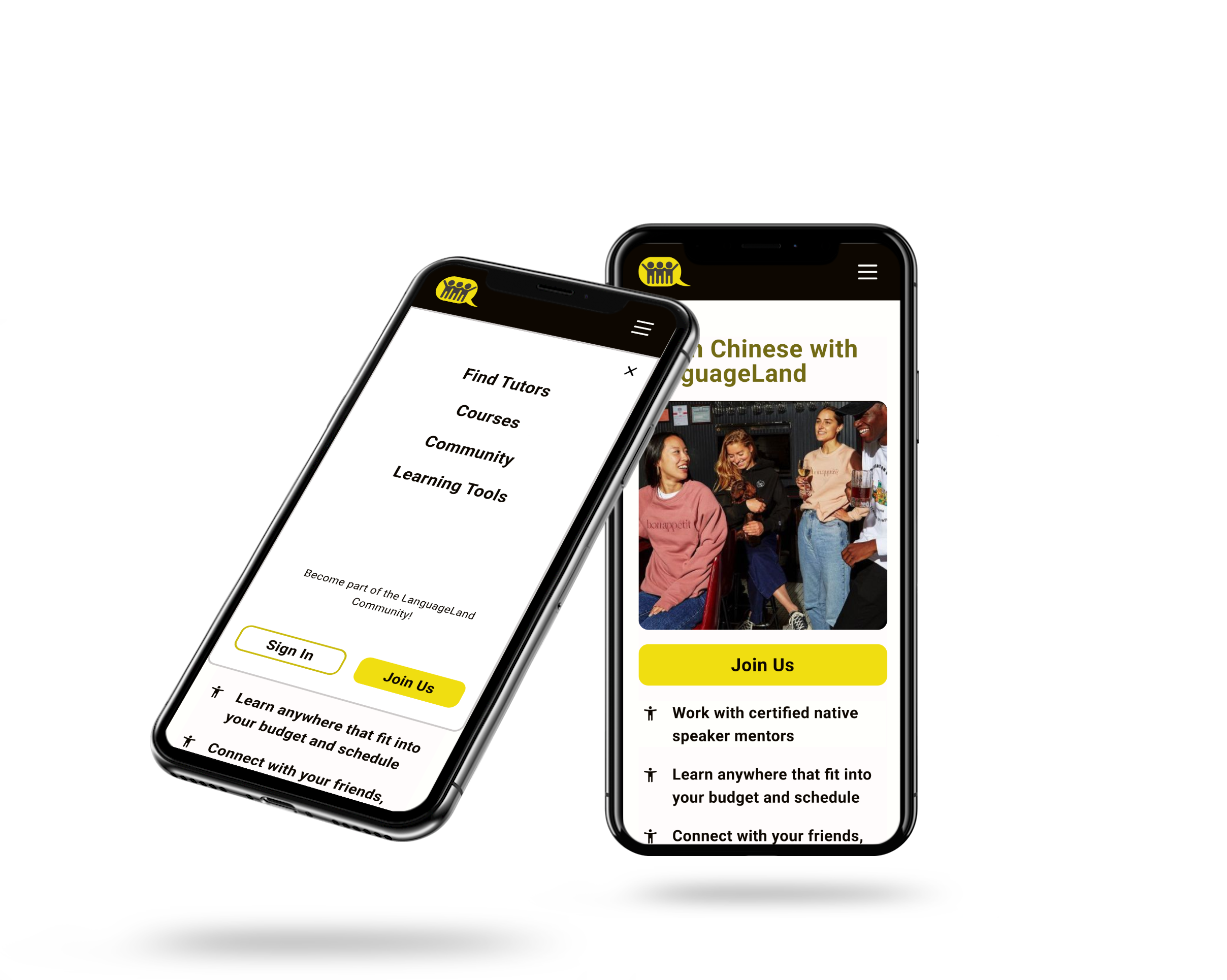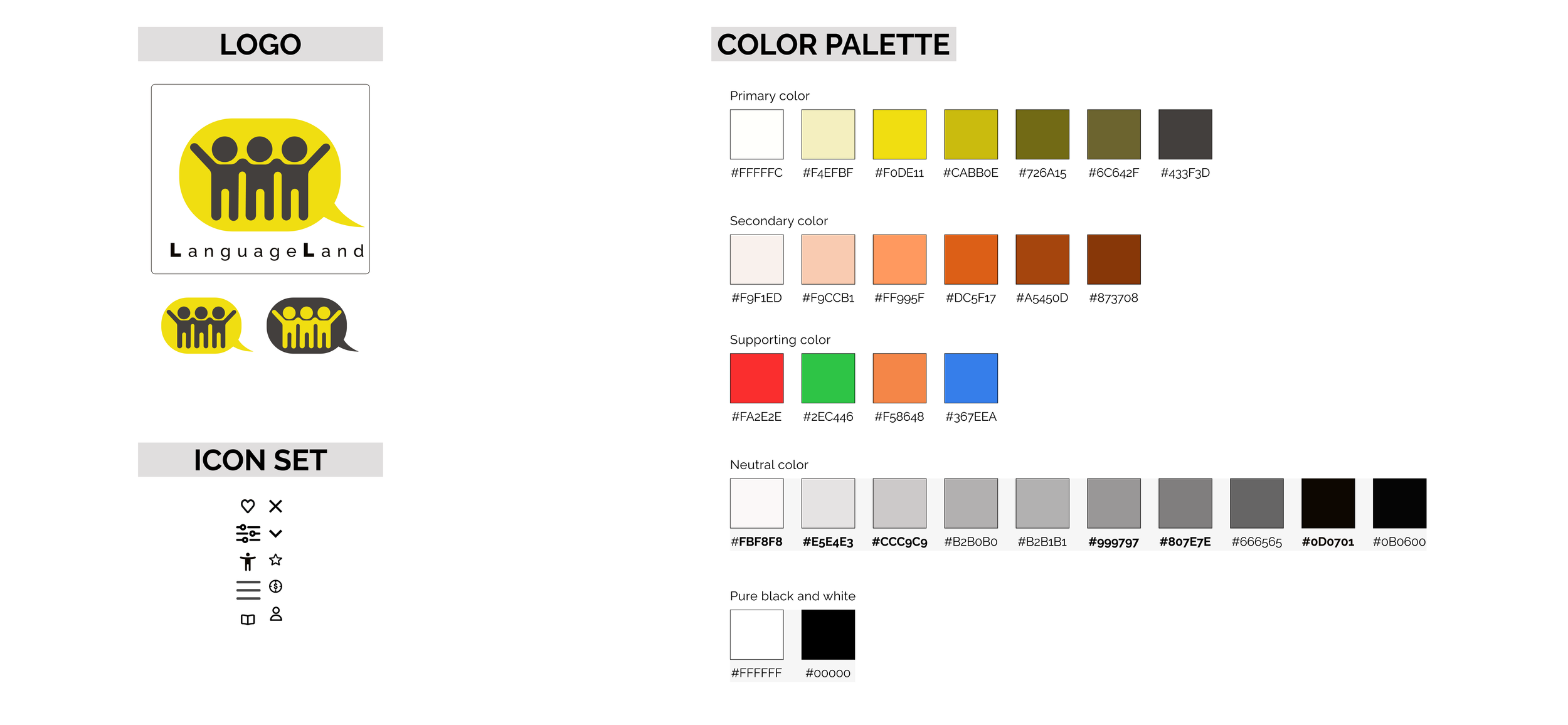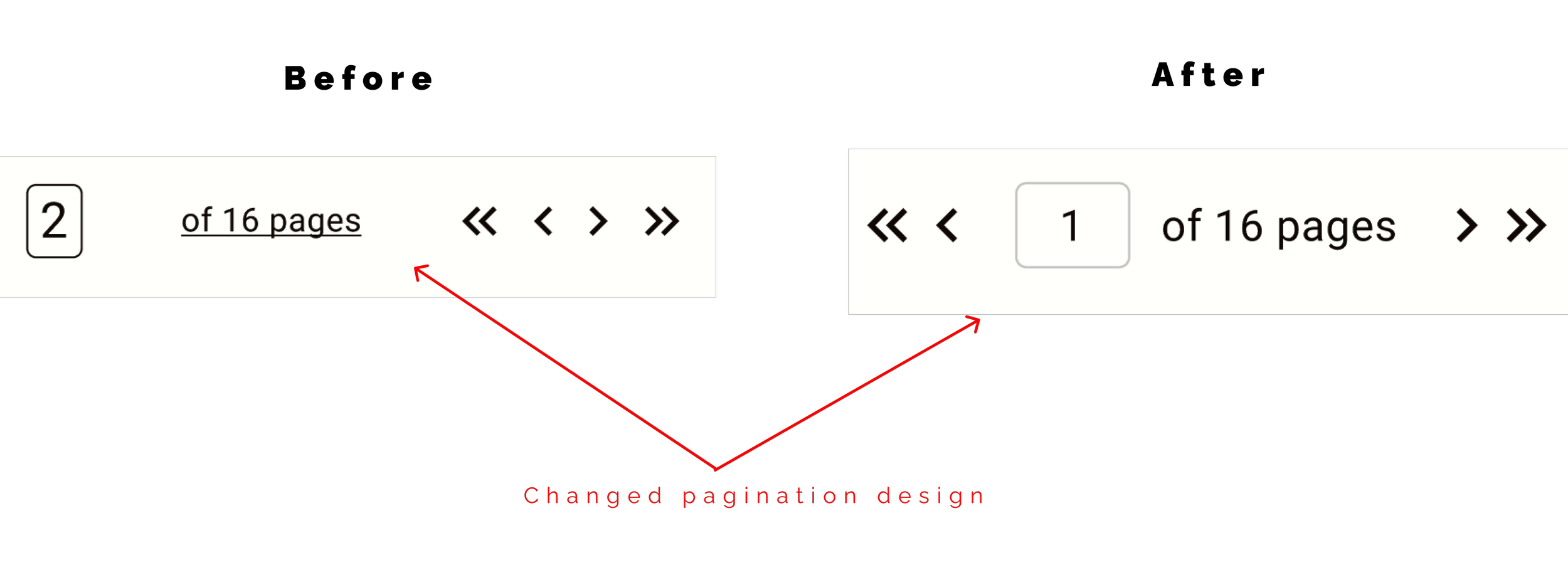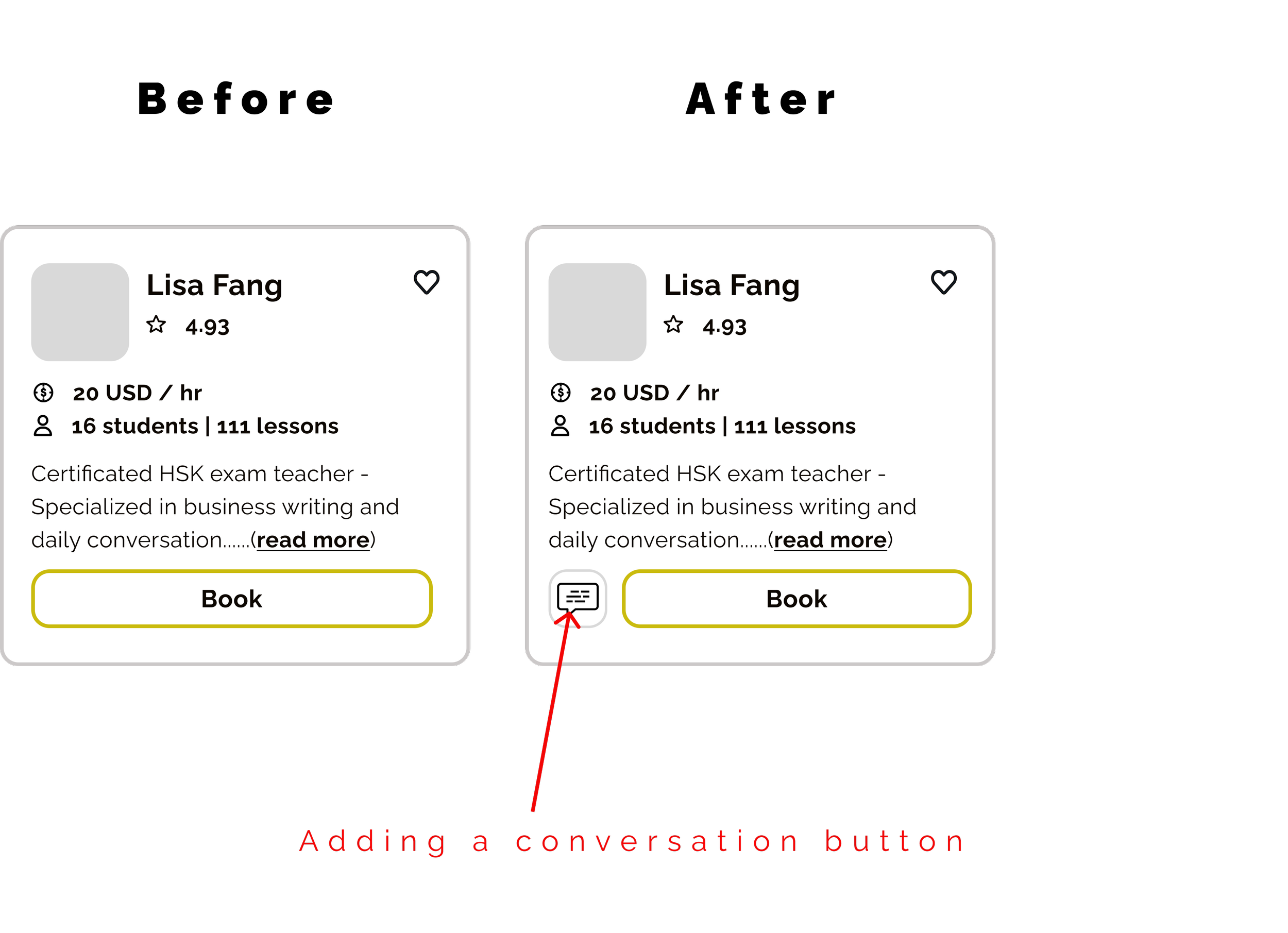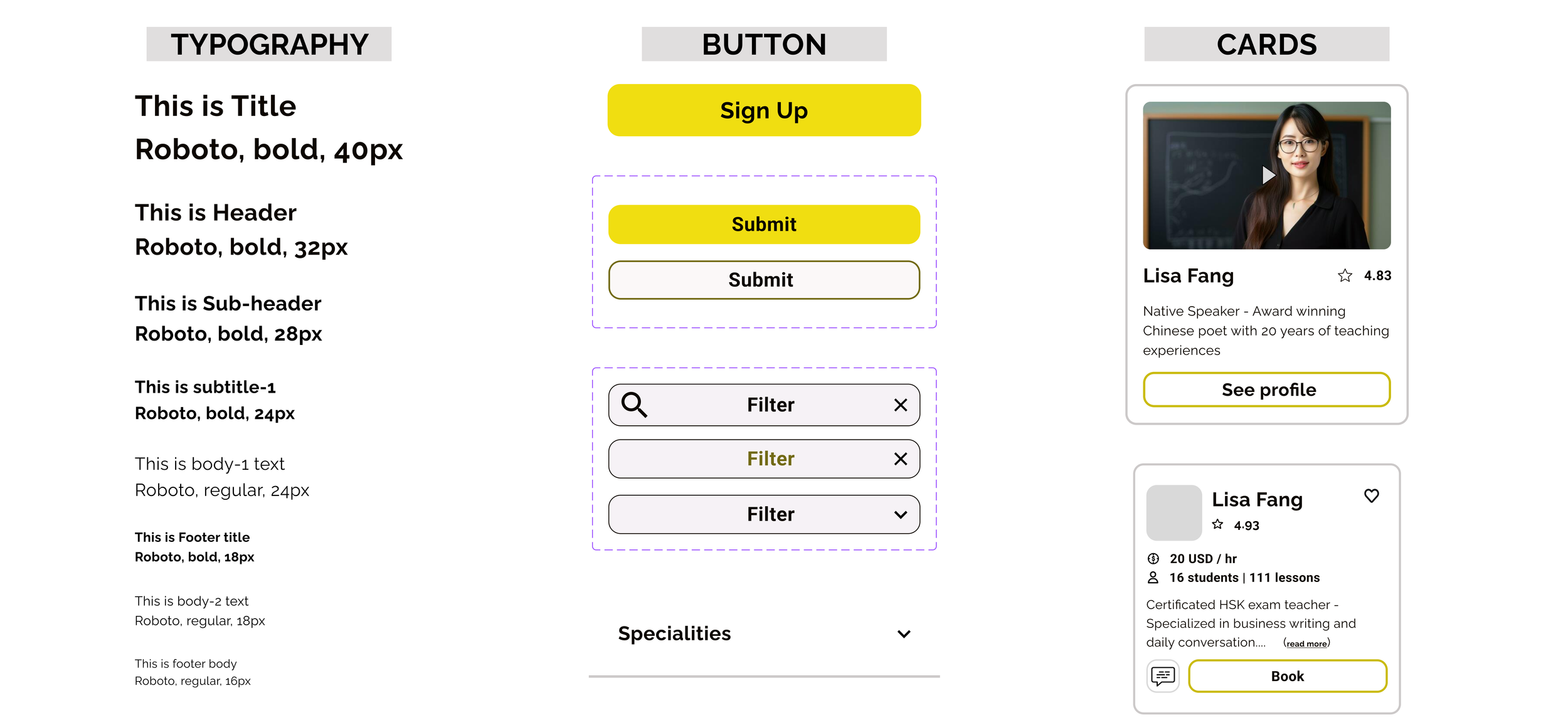LanguageLand
This case study highlights my inaugural UX/UI design project, a mobile-first Chinese learning site that has the potential to expand to a multiple-language learning site. I independently developed it as part of the Design Lab boot camp course. As an immigrant, I have personally witnessed the transformative power of language in fostering cross-cultural connections and global understanding. Motivated by my experiences, I am dedicated to designing a long-lasting and user-friendly language-learning website that enables individuals to be motivated to learn, communicate effectively, build meaningful relationships, and promote a more interconnected world.
The Challenge
In an increasingly interconnected global landscape, the demand for second language proficiency is rapidly growing. Online language learning is experiencing unprecedented expansion, with market projections rising from $12 billion in 2019 to $47 billion in 2025, representing a 26% compound annual growth rate. Despite this immense growth, learners often struggle with motivation and sustained practice.
To gain a comprehensive understanding of the language-learning site, we employed various initial research methods. Our approach included conducting surveys, moderated interviews, affinity mapping, competitive analyses, “How Might We” exercise, and divergent thinking practice, to identify existing challenges and solutions within the industry. We surveyed 18 people and interviewed 6 language learners out of the survey to understand their joys, common learning habits, pain points, and struggles with motivation and practice.
How can we help the learners keep feeling motivated throughout
the language learning process?
Discover the Problem Space
Interviews
Our users desire feedbacks, native speakers, and friends to learn together.
I interviewed 6 out of the 18 survey participants, and conducted interviews to learn the following objectives and synthesized the key insights through Affinity Map.
How do the new language learners learn a new language?
What do the learners enjoy and frustrate during the learning process?
Habits and goals for learning a new language
Key findings/ problems
1. Our target users are mainly young professionals.
2. Learners desire to practice with native speakers but can’t find them.
3. The learning material is not realistic and is too simple.
4. Lack of feedback is a problem.
5. Learners don’t like to learn alone.
6. Most language learning sites offer only a few features that users need.
The Solution
Building up an innovative language learning platform offering a comprehensive learning experience. It provides users with personalized 1-on-1 sessions with native speaker mentors, a standardized curriculum, and unique language-pal features that foster meaningful connections with fellow language enthusiasts.
A language learning site provides 1-1 native speaker mentors, a
standardized curriculum, and language-pal features.
Competitive Analysis
“I couldn’t find native speakers to practice and it’s also pretty hard to keep learning the language alone, so I gave up.”
- Dennis N.
Conducting a competitive analysis is essential for understanding the market landscape and identifying opportunities to differentiate my product. By evaluating competitors' strengths and weaknesses, I can gain valuable insights to refine the business strategy and better position.
What do other language learning sites look like?
How do they function?
What features do they have?
What are their strength and weakness?
I analyzed 4 major language-learning sites: Duolingo, CAMBLY, Preply, and italki
Most of our competitors don’t have all the functions the learners need.
Personas and storyboard
Design and Prototype
Brand design and UI Kits
LanguageLand cultivates a brand identity that is friendly, intellectual, and welcoming.
In order to capture LanguageLand’s spirit of being a language-learning website dedicated to fostering a warm, professional, and inspiring environment for its users. Our logo, designed in a vibrant yellow hue, symbolizes optimism, creativity, and intellectual energy, reflecting our commitment to promoting an engaging and stimulating learning experience. Drawing from color psychology, we believe that yellow's association with positivity, warmth, and mental clarity aligns with our mission to create an uplifting and effective educational platform. Through brand design, site mapping, user flow and task flow, wireframing, usability interview, iteration priority matrix, and iterations, we achieved our prototype.
User flow and high fidelity wireframe
I use user flow to help me visualize the path a user takes when they try to use the filters to find the tutors they prefer by outlining the steps required to complete specific tasks or goals. I also use wireframes as a basic visual representation of the structure, hierarchy, and layout of the interface. They allow me to experiment with various layouts, to iterate, and to refine my designs.
Based on patterns from my research I developed two personas - a single friendly computer scientist who loves to travel and a married caring therapist Jenny wants to get in-depth in Chinese learning to serve her clients. This allowed us to keep our target audiences in mind throughout the design process. By creating personas "Jennifer" and “John”, we can empathize with users' needs and aspirations, ensuring that our design solutions align with their goals and desires. The storyboard indicates how the product will improve users’ language learning outcomes.
Persona
Storyboard
I designed all the filters to help users to find their favorite mentors.
Usability Test and Iteration
Moderated usability tests were conducted with five participants through Google Meet to assess LanguageLand's overall usability and effectiveness. The primary objectives of these tests were to identify barriers to completing essential tasks, uncover pain points, and gather participants' impressions of using the product.
To achieve these goals, a diverse group of participants was selected to ensure a comprehensive evaluation of LanguageLand's features and user experience. The usability testing focused on two key aspects:
Assessing the effectiveness of LanguageLand's main features and users' ability to complete designated tasks.
Identifying potential issues related to the website's flow and overall user experience.
Usability testing results
100% of users identify with the brand color, design, the brand value.
100% of users found the “finding your tutors” user flow easy to navigate, intuitive, and user-friendly.
100% finish this user flow within 30 seconds.
100% users think they will enjoy such a new site more than the competitors listed above.
I love the yellow. It makes LanguageLand bright and light!
- Dennis N.
The site is very user-friendly and professional-looking. It’s also pretty easy for me to find different sessions
- Anastasia C.
Iteration
Based on the insights from my usability test and action priority matrix, I chose the top two critical interactions.
Prototype
Summary
I love the logo. Everything is pretty clean and easy to use!
- Julie W.
1. LanguageLand is a Chinese learning site featuring 1-1 native speaker mentors, standardized course material, and language-pal functions.
2. LanguageLand has the potential to become a multiple-language learning site.
3. I manage the entire UX/UI process from a business concept, discovery, to deliver a digital product.
4. Next steps are to complete all desktop and mobile pages and features.
Survey
To understand the demographic information and define our target audiences, I gathered 18 participants from Discord and Reddit. The information would also be used when we create our personas.
An end to end mobile-first language learning platform that nurtures a lifelong passion with 1-1 native speaker mentors and language-pals.
My Roles
Solo UX/UI designer
Competitive analysis
Brand design
Prototyping
Tools
Figma/FigJam
Procreate
Optional Workshop
Google form
Duration
Feb 2024 - May 2024
Problem
Language learners struggle with finding native speakers, engaging with realistic materials, getting feedback, and learning alone. However, most of the currents services and products on the market now only provide limited features.
Solution
A language learning site features 1-1 native speaker mentors, standardized course material, and language-pals features.

